Summary
Daniel is a retired baker who still likes to bake and cook. He is concerned about his regular overnight episodes of hypoglycaemia and consequently chasing his sugars in the morning.
Daniel is a retired baker who still likes to bake and cook. He is concerned about his regular overnight episodes of hypoglycaemia and consequently chasing his sugars in the morning.
High cholesterol, hypertension; currently prescribed ramipril and simvastatin.
The key goals are to minimise overnight hypoglycaemia and manage his exceptional hyperglycaemic swing in the mornings.
| Age | 67 | BMI | 28.1 kg/m2 |
| Diabetes (Type) | Type 1 diabetes | Last HbA1c value | 57.4 mmol/mol (7.4%) |
| Profession | Retired baker | Target glucose range | 3.9–10 mmol/L |
| Duration of diabetes | 37 years | Treatment | Basal-bolus insulin therapy |
Daniel scans very regularly and his sensor data capture at 95% has helped in obtaining a good AGP Report. His Time in Range is 48%, but given his age and duration of diabetes, this is not a concern.
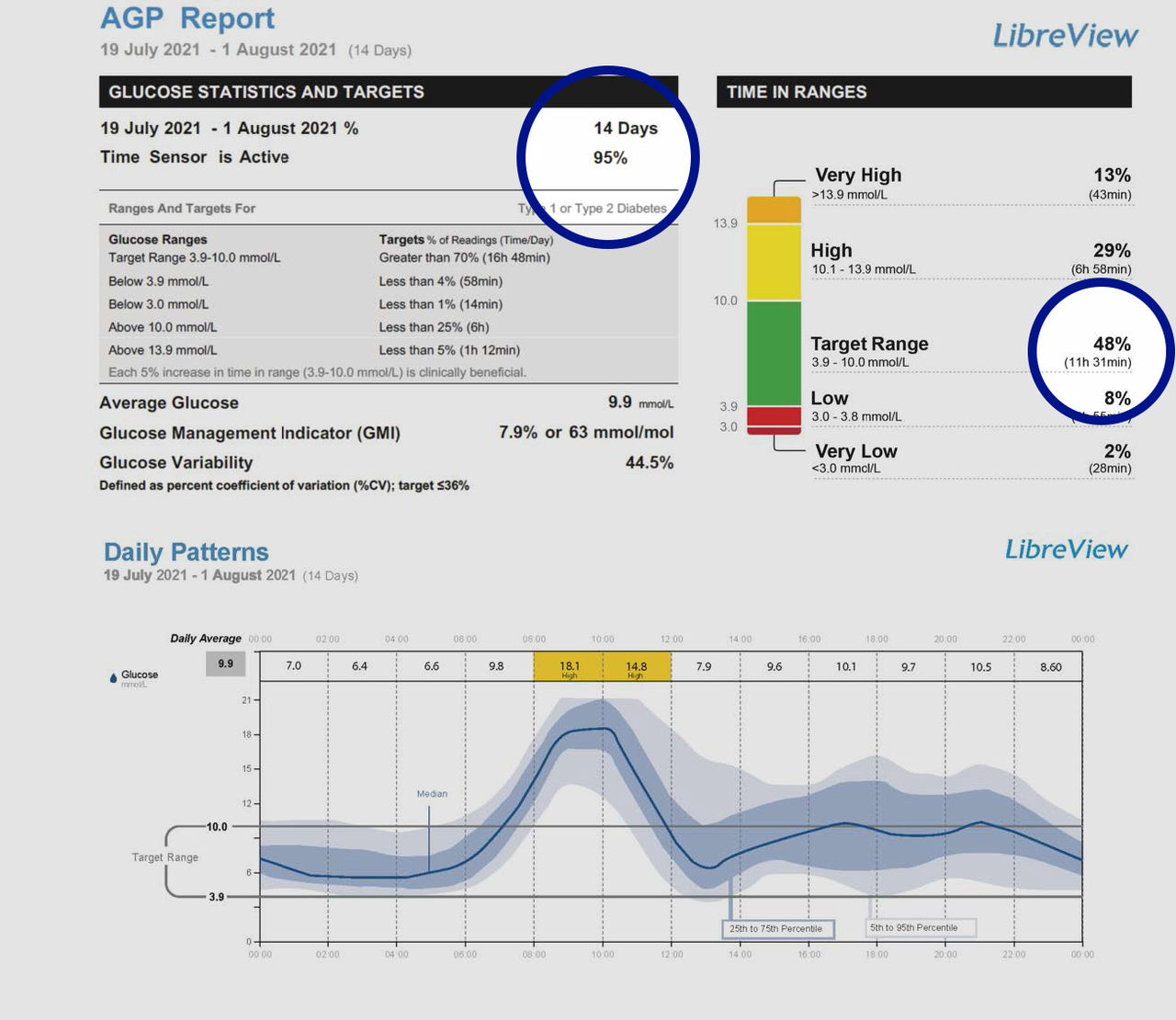
Daniel’s Time Below Range is poor at 10% which is well above the recommended target of less-than 4%. Also, his AGP shows a consistent drop in glucose overnight from midnight through to 6:00am, and his Snapshot report shows with significant low glucose events in this period. There is another steep fall towards the low-glucose zone around 12:00pm–2:00pm, again associated with low glucose events. His glucose variability later in the day also puts him at risk of hypoglycaemia at these times. These trends are a priority for management.
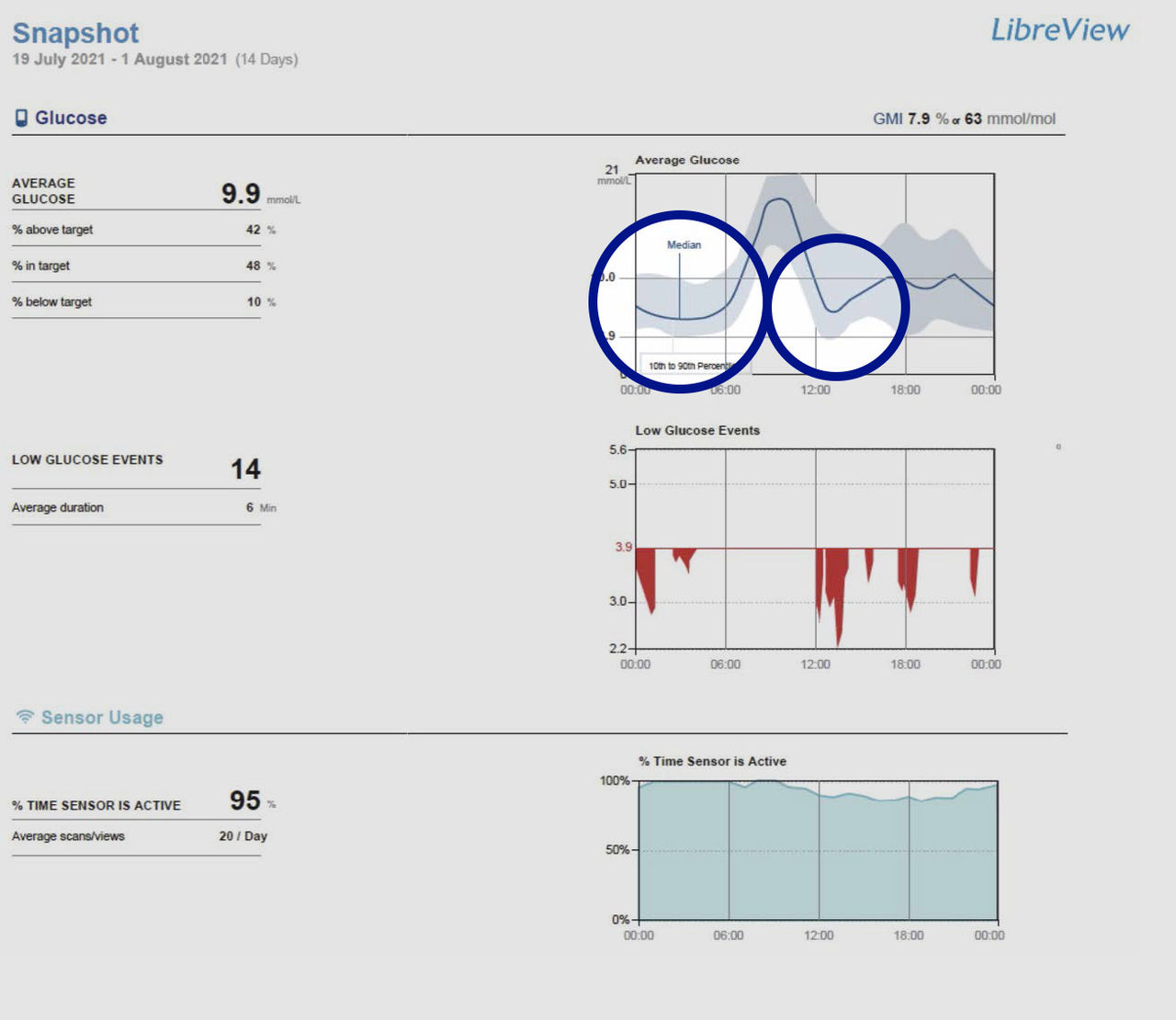
The most striking aspect of Daniel’s AGP is the major spike in glucose in the morning between 6:00am and noon. His Daily Patterns report shows that his average glucose level at this time is 18.1 mmol/L. Adjusting his prandial insulin dose and timing before breakfast should be a priority of this consultation. The blue and grey bands show variability well above the target range throughout the afternoon and into the evening, with a poor time above target performance of 42%.
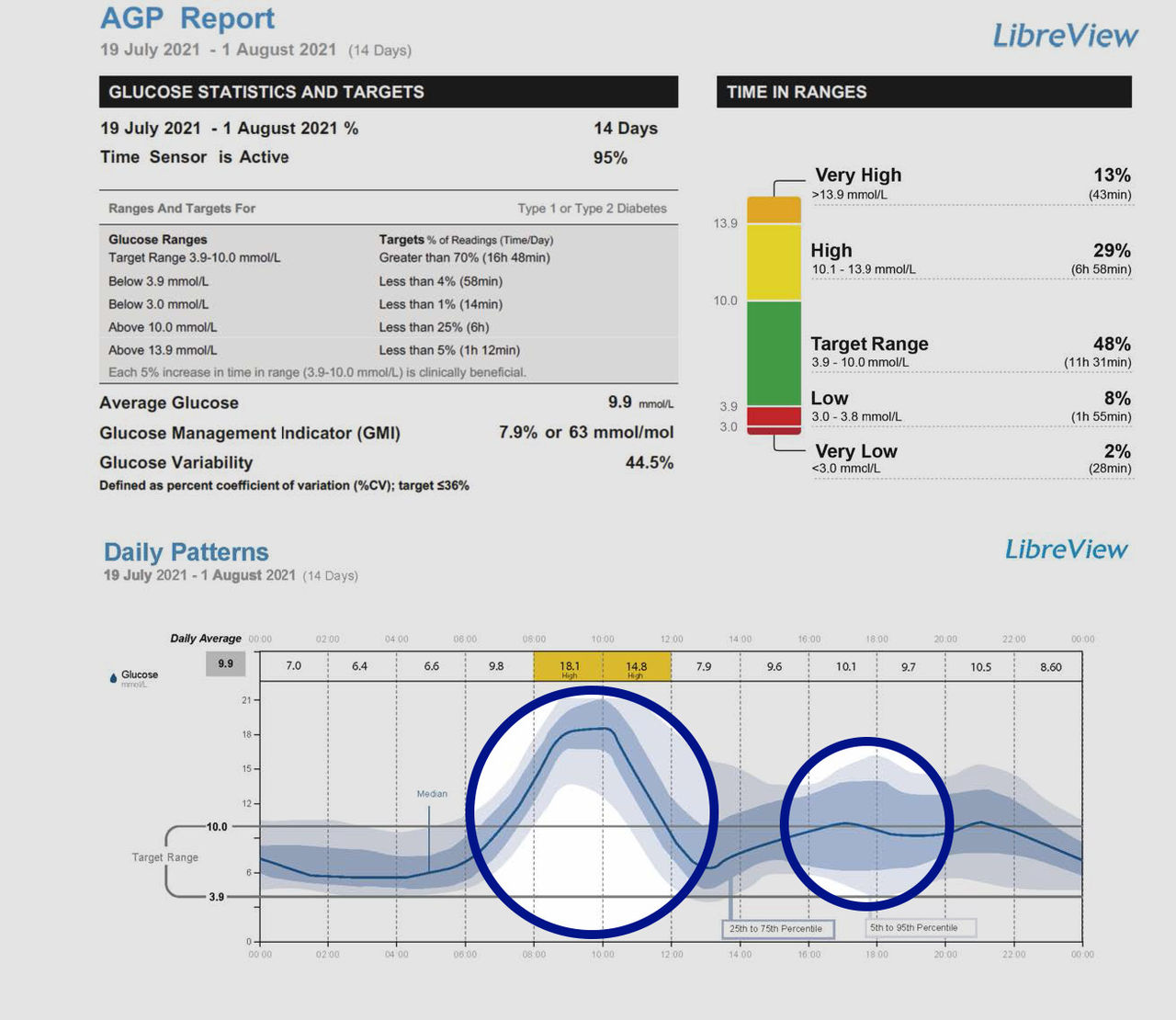
The blue and grey bands in Daniel’s AGP are fairly narrow through the night and morning until noon, after which they widen through much of the afternoon and evening. This indicates that Daniel is not matching his insulin needs to his meals and snacks, as well as his activities on some days. His glucose is unstable during the day, including the spike after breakfast. This suggests that Daniel should be advised to consider his insulin, his diet and his daily activities.
What actions might you agree with Daniel?
Daniel’s prandial insulin dose should be increased to moderate the large post- breakfast glucose excursion. The timing of this bolus also needs to be considered.
Reducing Daniel’s correction-dose calculation in response to his glucose spike may help minimise the steep fall into the low-glucose zone.
Daniel is a baker and loves cooking. There is a need to discuss his lifestyle and eating behaviour to address the lifestyle-related variability as revealed by the wide grey shaded band.
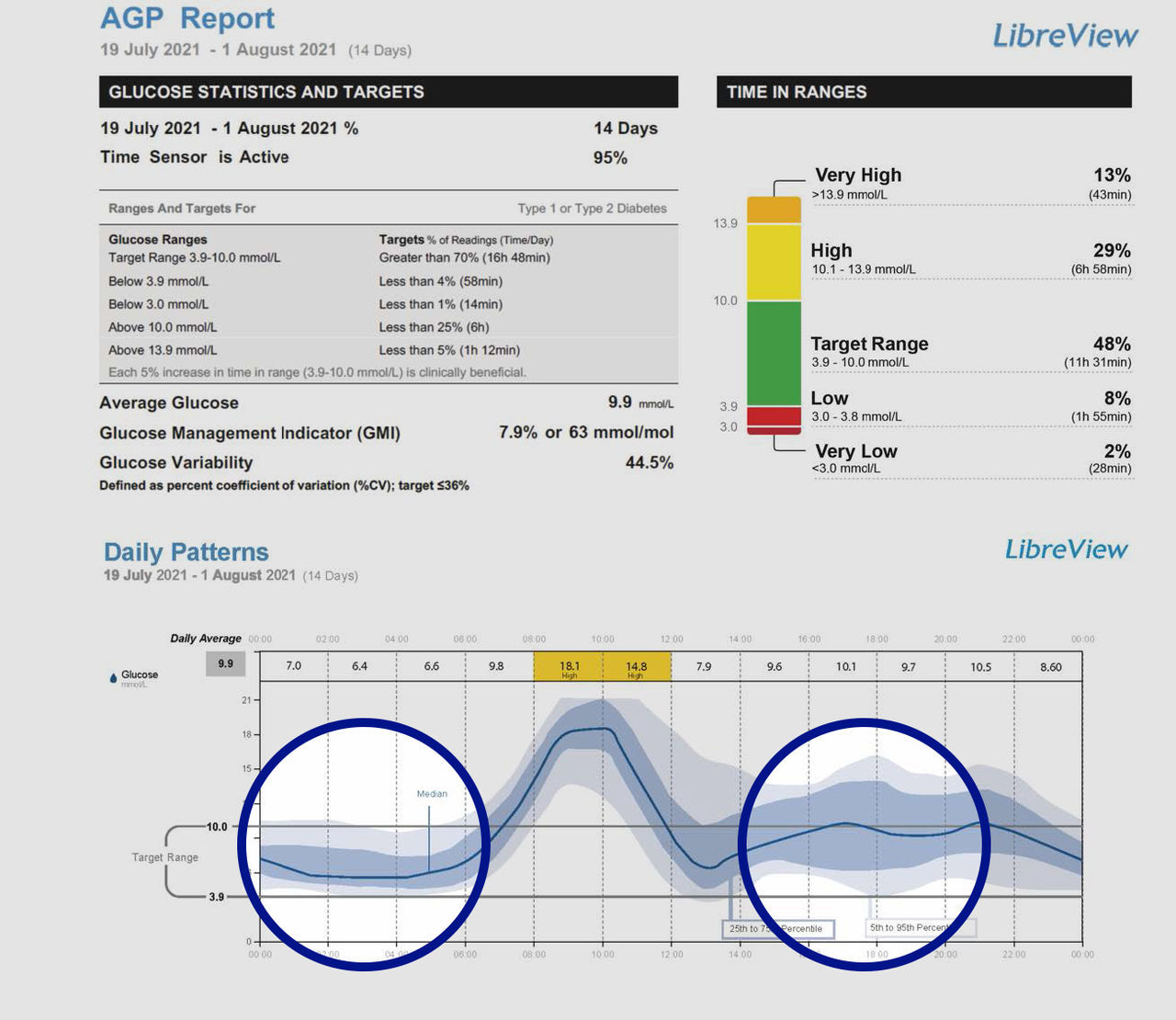
Daniel’s data capture is still excellent at 94% and his Time in Range has increased to 58%. These are positive outcomes from his last review, he can be pleased with his progress.
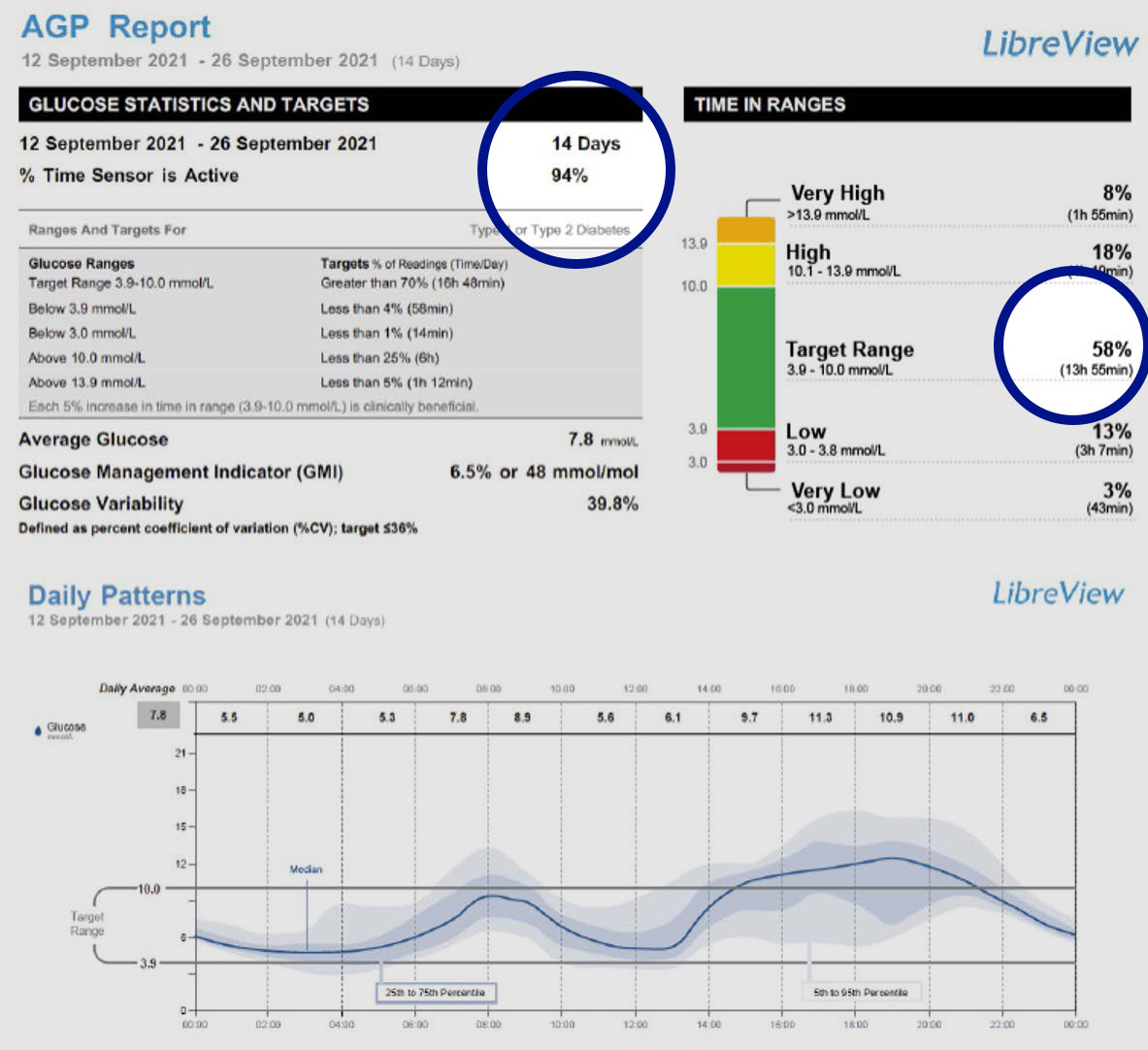
Daniel’s overnight lows are still a priority as his glucose is still consistently falling overnight. If anything, it is more of a concern as his median line and blue shaded band are dropping below target between midnight and 6:00am, with low glucose events overnight with some readings below 3.0 mmol/L. His trough between late-morning to early afternoon is still a cause for concern, between 10:00am – 2:00pm. These low-glucose problems are confirmed by the fact that his time below target has increased to 13% and requires immediate intervention.
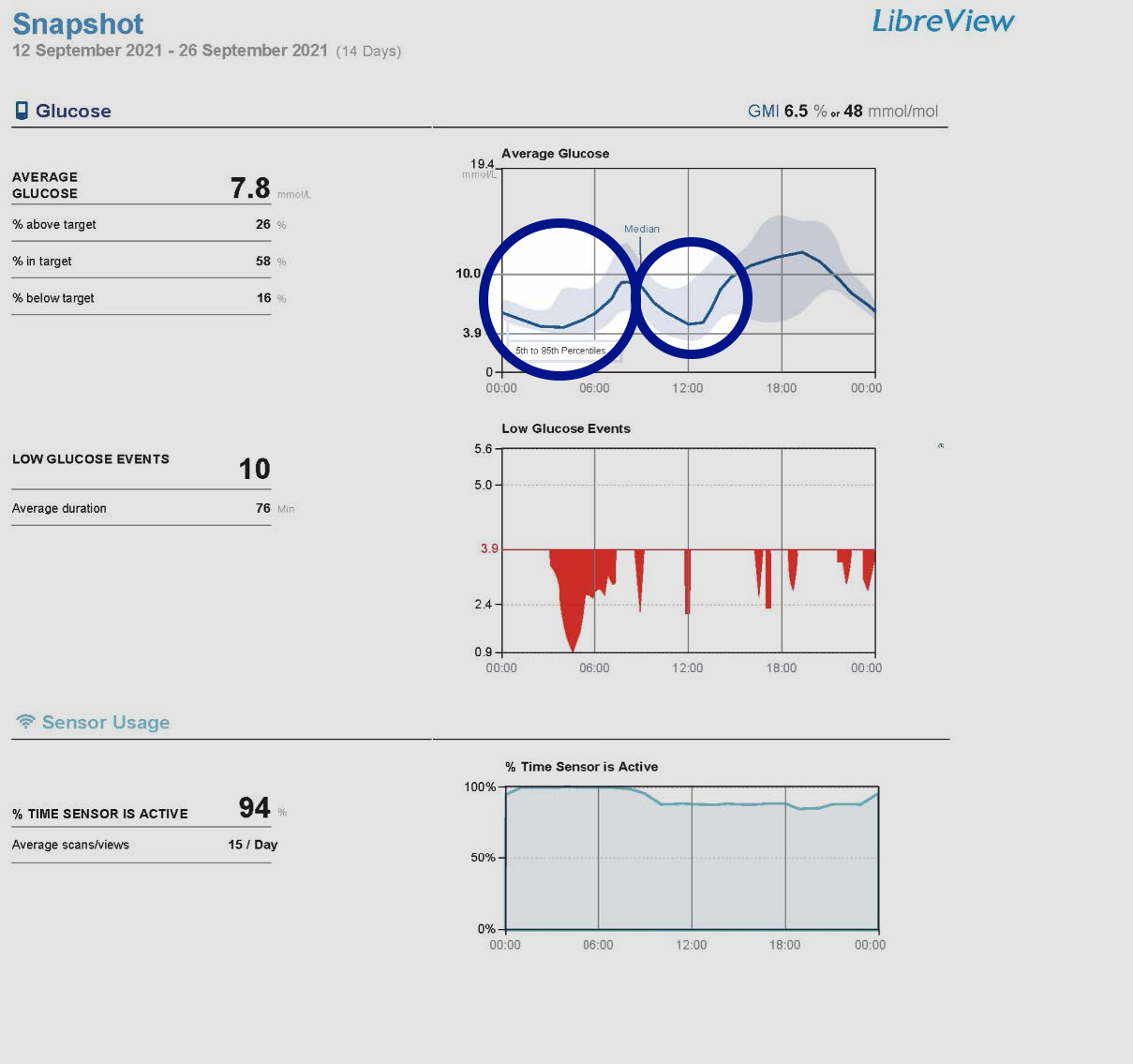
The changes in Daniel’s treatment have reduced the morning glucose spike significantly, with average glucose levels within his target range, which is really encouraging. However, the blue median line and blue shaded band of variability are swinging upwards above Daniel’s target range from 1:00pm–9:00pm and should be addressed. His time above range has reduced significantly from to 42% to 26%, good progress, but it still needs to improve further.
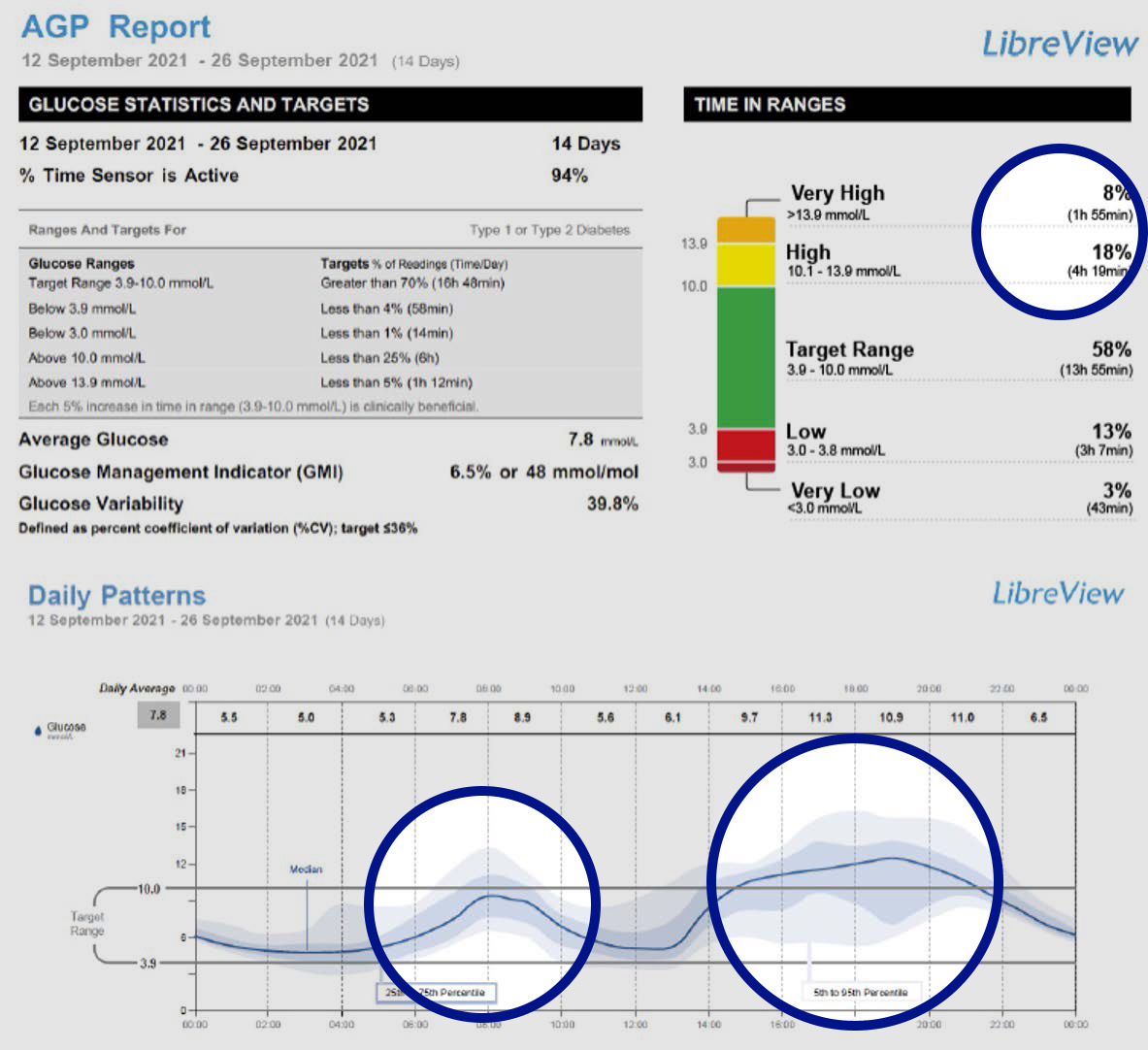
The variability shown by the blue and grey bands in Daniel’s AGP has improved in the morning, but both are still ballooning in the evening, indicating high glucose variability, most notably between 4:00pm–9:00pm.
What actions might you agree with Daniel?
Daniel’s basal insulin should be reduced to address the hypoglycaemic trend during the second half of the night and morning.
Changes to his mealtime insulin can be assessed once the change to his basal insulin can be reviewed.
The ballooning grey shaded band throughout the afternoon and evening suggests that Daniel needs to be more consistent in his eating habits and his social activities on different days.
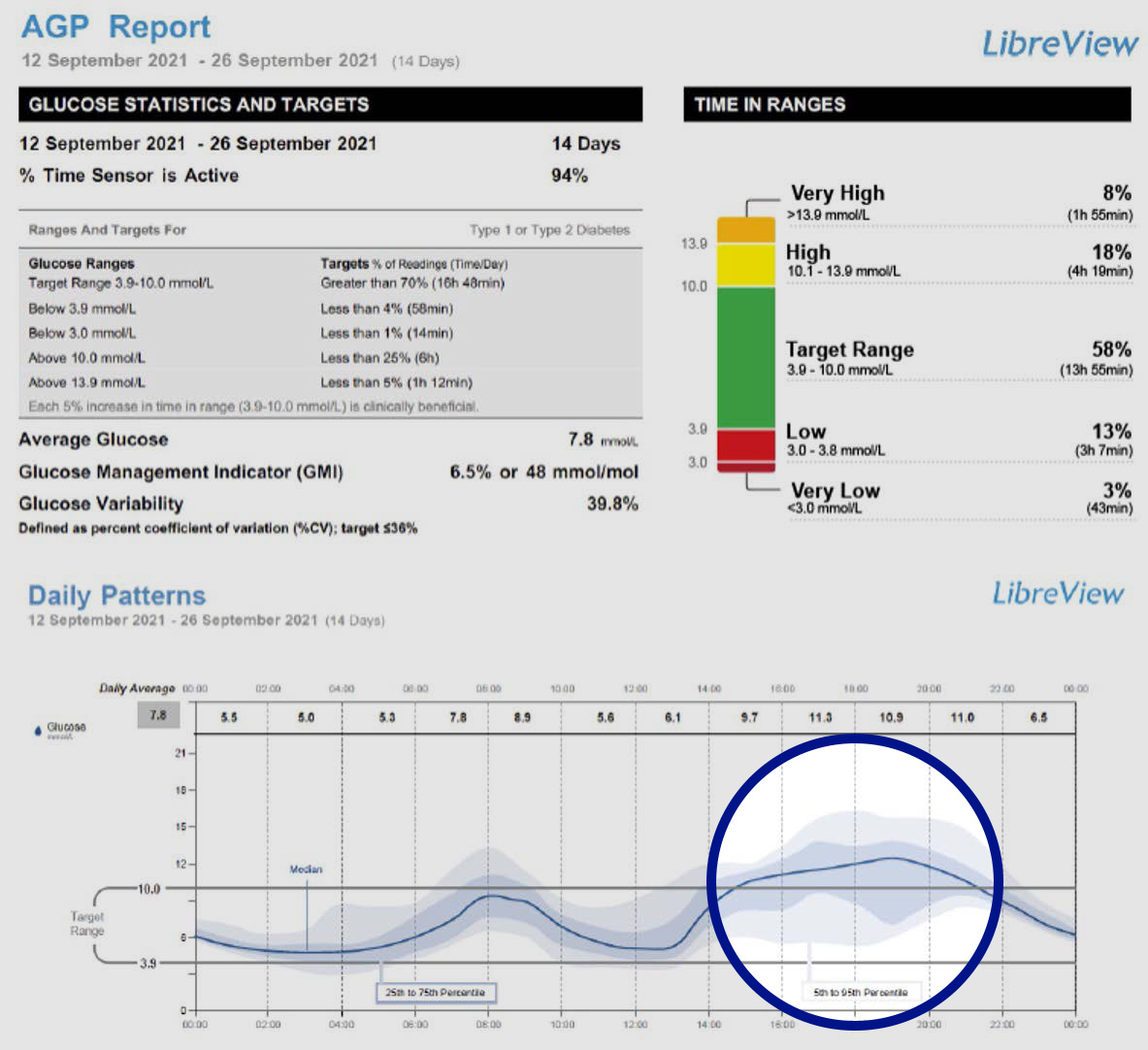
Case Study: Jackie
Case Study: Ruby
References & Disclaimers
Images are for illustrative purposes only. Not actual patient or data.
ADC-72046 v1.0 04/23
The "Yes" link below will take you to a website other than Abbott Laboratories. Links to other websites are not under the control of Abbott Laboratories, and Abbott Laboratories is not responsible for the content of such websites or any link contained in such websites. Abbott Laboratories is providing these links to you only as a convenience, and the inclusion of any link does not imply endorsement by Abbott Laboratories of the site.
Do you want to leave this page?
If you're a healthcare professional located in a different country, please select your country's website from the list of our global sites or contact your local Abbott representative for correct information about the products available in your country.
If you're not a healthcare profressional, click here to go to the FreeStyle Libre consumer website for the UK.
Stay connected